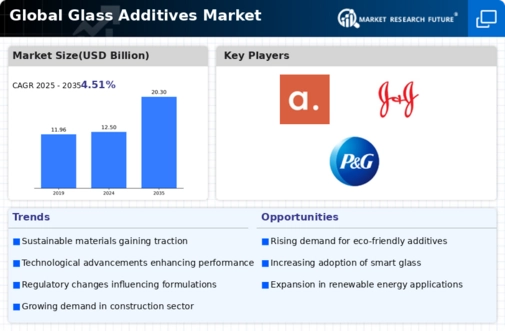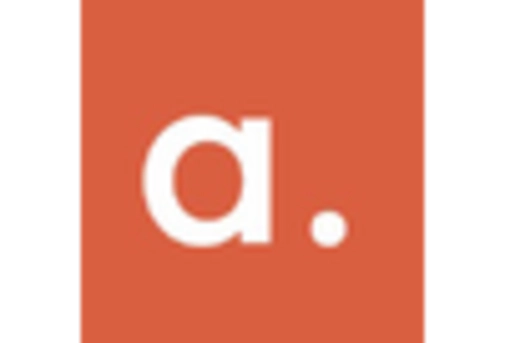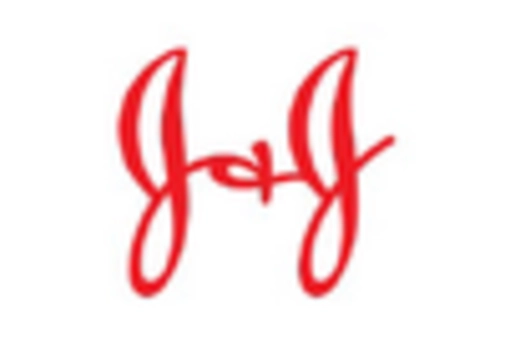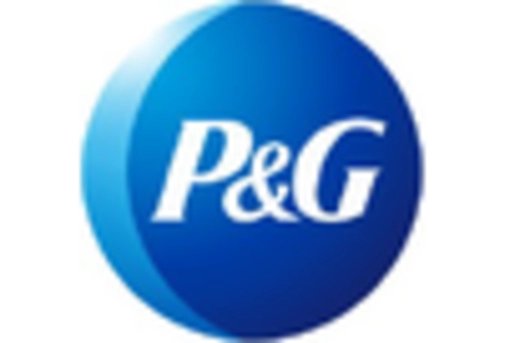Market Analysis
In-depth Analysis of Glass Additives Market Industry Landscape
The market dynamics of the glass additives industry are influenced by various factors that impact supply, demand, and pricing within the market. One significant driver of this market is the growing demand for glass additives across various end-use industries such as construction, automotive, electronics, and packaging. Glass additives play a crucial role in enhancing the properties of glass products, including strength, transparency, thermal resistance, and chemical durability. As these industries continue to expand, there is a corresponding increase in the demand for glass additives, driving market growth in this segment.
Moreover, technological advancements in glass additive formulations play a significant role in shaping market dynamics. Manufacturers are constantly innovating to develop glass additives with enhanced performance characteristics, such as improved scratch resistance, UV protection, anti-reflective properties, and self-cleaning capabilities. These advancements cater to the evolving needs of end-users and contribute to the development of high-performance glass products across various applications, thereby driving demand for glass additives.
Furthermore, environmental regulations and sustainability concerns are increasingly influencing the glass additives market dynamics. Governments worldwide are implementing stricter regulations aimed at reducing the environmental impact of industrial activities, including the use of hazardous substances in glass additive formulations. As a result, there is a growing demand for eco-friendly glass additives that are free from harmful chemicals and comply with environmental standards. Manufacturers are responding to this demand by developing sustainable glass additive formulations, driving market growth in this segment.
Additionally, the construction industry plays a crucial role in shaping the dynamics of the glass additives market. Glass additives are widely used in construction applications such as architectural glass, facades, windows, and doors due to their ability to enhance structural integrity, energy efficiency, and aesthetic appeal. With the global construction industry witnessing steady growth, particularly in emerging economies, there is a corresponding increase in the demand for glass additives, driving market growth.
Competition within the glass additives market is intense, with several key players vying for market share. Companies differentiate themselves through product innovation, quality control measures, and customer service initiatives. Moreover, strategic partnerships, mergers, and acquisitions are common strategies employed by industry players to expand their market presence and gain a competitive edge. Additionally, pricing strategies play a crucial role in market dynamics, with manufacturers often adjusting prices in response to changes in raw material costs, competition, and market demand.
Global economic conditions and geopolitical factors also influence the glass additives market dynamics. Fluctuations in currency exchange rates, trade tariffs, and political instability can impact the cost of raw materials, transportation, and regulatory compliance, affecting both supply chains and pricing strategies. Furthermore, shifts in consumer preferences and purchasing power across different regions influence market demand and consumption patterns, driving manufacturers to adapt their strategies accordingly.
The COVID-19 pandemic has had a significant impact on the glass additives market dynamics, causing disruptions in supply chains, fluctuations in demand, and changes in consumer behavior. While the initial shock of the pandemic led to a temporary slowdown in construction activities and automotive production, the recovery phase has seen a resurgence in demand for glass additives as economic activities resume and infrastructure projects resume.






Leave a Comment